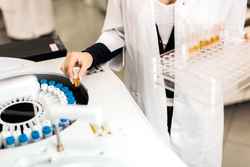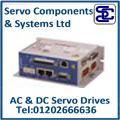
Posted to News on 14th Mar 2016, 13:38
Developing new fluid management systems for in-vitro diagnostics
In-vitro diagnostics (IVD) form a vital part of modern healthcare, enabling earlier and more accurate diagnoses, leading to more targeted treatments and better patient care. The equipment ranges from the simple self-tests to sophisticated technologies used in clinical laboratories, but it all has the common requirements for accuracy and reliability.

Equipment that is used for diagnosis, screening and therapeutic monitoring provides essential information to determine the best course of action for a patient. For manufacturers that are looking to develop new and innovative technologies, it is important to show that any new device will deliver a significant improvement for the patient as well as adding value for the end user.
However, the temptation for hospitals and laboratories is sometimes to invest in proven designs and direct replacements for equipment that has reached the end of its service life in preference for trying something new. Any new equipment therefore must have proven benefits in terms of performance in terms of accuracy, specificity and sensitivity as well as accommodating the general requirement to reduce overall costs. For an original equipment manufacturer (OEM), this can pose some considerable challenges to the design team.
One approach which has produced significant success is working more closely with component suppliers and using their design and engineering expertise to assist with the overall design of the equipment. Meeting stringent design requirements can be achieved by closer cooperation with suppliers, who can often create new or modified components specifically for one client with a minimal on-cost to the project.
In addition, it is possible to deliver a far more integrated product where a simplified design can be adapted to suit several applications, reducing parts inventories and costs, both for the manufacturer and the end user. Improved technology for IVD equipment does not have to employ more complex designs, merely taking a new approach can deliver cost-effective and reliable products.
This concept can be illustrated by an example where a manufacturer that was looking to create a new analyser, needed to find a solution for the precise and reliable measurement, regulation and control of the flow rates in a new dosing unit. The project was made more complicated by a requirement for exacting aesthetics from the client.
High-quality aesthetics
The design of the new analysis equipment called for a number of dosing units to be included, depending on the model specification. Each dosing unit consists of an injection unit, two or three valves, a pressure sensor and a filter, all mounted on a transparent, injection-moulded manifold. Each model of analyser required a different number of dosing units and the client was insistent on specific colours for the moulded plastic components in order to maintain the high-quality aesthetics of the equipment, both inside and out.
The OEM was faced with a complex design challenge that would require considerable design and manufacturing expertise to deliver the optimum product. In this case the solution was provided by Brkert Fluid Control Systems, which has a long and distinguished history working in the medical and pharmaceutical industries.
The first step was to develop a manifold that could be used in five configurations to suit the various analyser models and to manufacture it from a clear but UV stable material in order to provide a viewing window on the pump chamber. The components that would fit into the manifold were selected according to a number of criteria; compact design, effective media separation, minimal internal volume and reliability to name just a few.
As the basic design took shape, Brkert engineers were keen to reduce the dead volume of the system as close to zero as possible, through the valve specification and using pins instead of balls for sealing. This helps to optimise the cleaning procedures of the analyser and minimise any waste of expensive reagents. Careful positioning of valves and other components also minimises the length of tubing being used and also improves the aesthetic of the design.
One of the key aspects of this process was to provide simulation data and tests including a flow simulation for the manifold even before the components have been produced. Once the design was finalised and approved, the new manifolds were manufactured by the specialist Brkert facility and tested before being shipped to the OEM.
This coordinated approach delivers a number of benefits to the both the OEM and the end user. By using the same manifold for all the machine variants, the OEM has reduced the development costs significantly. At the same time, by using common valve and sensor components, Brkert is able to deliver the same high-quality components more cost effectively thanks to the increased quantity.
Furthermore, the OEM received a complete system that has been assembled and tested, including chemical compatibility for all of the materials, prior to delivery. This reduces both the time and cost of the manufacturing process while also providing assurances of reliable and precise performance.
Solutions such as this can be employed by the IVD industry as it heads towards fully automated molecular analytical systems and the analysis of human genetics to deliver more targeted care. Through a more collaborative approach that utilises the skills and resources of both the component supplier and the OEM, new analysis technologies should be able to prove their credentials and become accepted by the mainstream operators.
To learn more about how Brkert can help OEMs, please visit www.burkert.co.uk.
Want the latest machine building news straight to your inbox? Become a MachineBuilding member for free today >>
Fluid Control Centre
1 Bridge End
GL7 1QY
UNITED KINGDOM
+44 (0)1285 648720


















